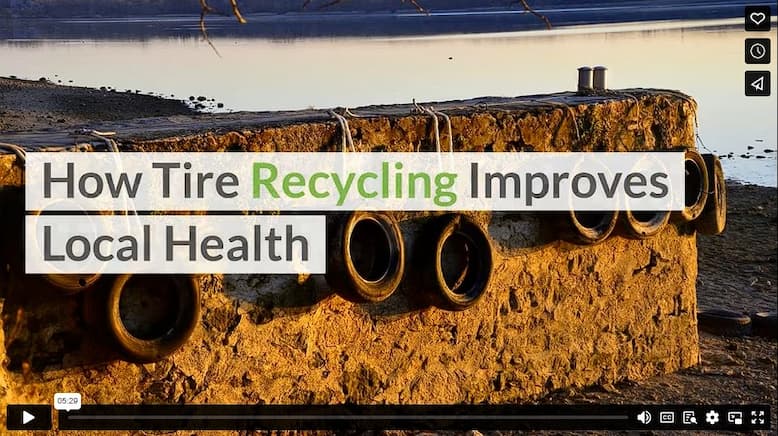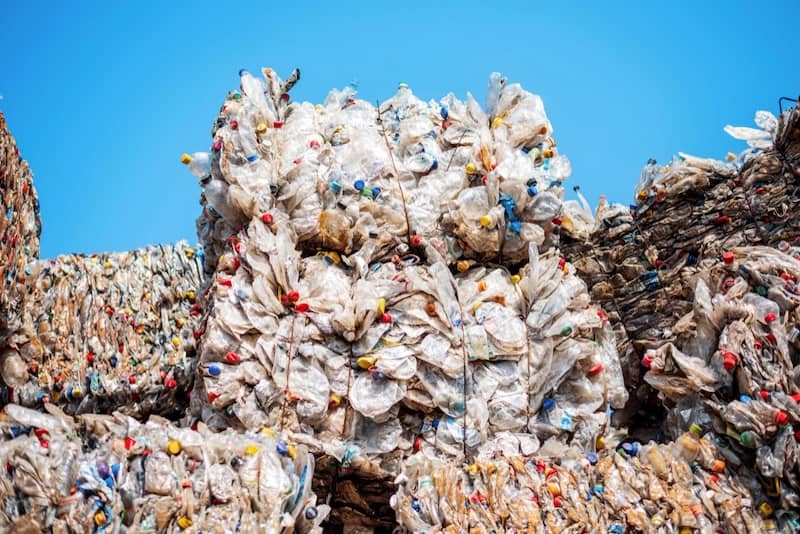Scrap tires abandoned on the side of the road, laying in vacant lots, and forgotten in backyard garbage piles are a common and seemingly harmless sight. The community might appear cleaner without them laying around, but tires are cumbersome to move and unexpectedly heavy. Hence, many people are content to leave them be without properly disposing of them at a waste tire recycling facility.
Seeing Waste Tires as a Health Risk
The fact is, waste tires pose a threat to the general health of a community. Buried tires don’t decompose, and those exposed to the elements eventually crumble, poisoning the soil and water where they sit. Additionally, their hollow ring shape allows for the accumulation of other health hazards. At the end of the day, tires waste tires negatively impact health in three significant ways.
- They attract rodents.
- They help mosquitos breed.
- They disperse toxins into drinking water and soil.
A review of how tires increase rodent and mosquito activity while dispersing harmful toxins helps us understand the import work of tire recycling companies and proper tire disposal practices.
Rodents
Why do waste tires attract rats and mice?
Waste tires are perfect rodent housing. The hollowed interior provides warmth and shelter for rodents. This protection allows them to reproduce and thrive in cold outdoor environments. Scrap tires left in fields also protect rodents from hawks, cats, and other predators. Considering these benefits, it is no wonder rodents see tires as affordable real estate.
How do rodents negatively affect local health?
Rodents are known for destroying gardens, buildings, food stores, attic heirlooms, and much more. However, the more severe threat rodents pose isn’t as evident as a gnawed away floorboard. Rodents are carriers for many zoonotic diseases. Zoonotic diseases are viruses or bacterial infections passed from animals to humans. The bubonic plague may be the most well-known zoonotic disease. The plague is easily transmitted by fleas who hitch a ride around the world on the backs of rats and mice.
In today’s world, some common zoonotic diseases attributed to contact with rodents include Weil’s disease, salmonella, and hantavirus. Hantavirus remains relatively rare, but lacking an effective cure, 35% of people who catch it pass away. To be infected with a zoonotic disease, you don’t need to have direct contact with a rodent. You need only be exposed to urine or feces from a carrying animal. In the end, it’s in everyone’s best interest to keep rodent infestations to a minimum which means properly disposing of waste tires.
Mosquitos
Tire manufacturers design tires for efficient and safe road travel. However, when used tires are left in landfills or by the side of the road, their design aids a major health hazard common in tropical climates: vector-borne diseases. These diseases, such as malaria and West Nile Virus are transmitted by mosquitoes.
Why do mosquitoes thrive among waste tires?
The hollowed shape of a tire captures water, creating stagnant pools. These pools provide the ideal conditions for mosquito eggs and larvae. Waste tires quickly become mosquito maternity wards requiring only an inch of water to harbor hundreds of eggs.
How do mosquitoes affect local health?
Although largely unseen in many developed countries, diseases caused by mosquitos pose a massive threat to many local communities in Africa and South and Central America. The World Health Organization cites a study that states, “Vector-borne diseases are responsible for a substantial portion of the global disease burden causing ∼1.4 million deaths annually.” So mosquitos are more than annoying little insects, and discarded tires amplify the mosquito problem.
Toxins
What toxins do waste tires release?
Frontiers, an environmental science journal, published a study focusing on the toxins leaching from tires into marine environments. They found that tires contain a wide variety of toxic chemicals, including phthalates, thiazoles, and heavy metals that are toxic to plants and animals.
How do toxins released by tires affect local health?
The chemicals released by disintegrating tires impact the environment and pose risks to human health. Many of them are known or suspected carcinogens. Human exposure to heavy metals can result in gastrointestinal ailments and kidney failure. The slow leaching of these chemicals poisons waterways that then become unable to sustain bird, fish and plant ecosystems. Human health is especially affected when the leaching imposes on drinking water.
The Solution: Tire Recycling
The health risks associated with rodents, mosquitos, and leaching toxins have caused governments to pass waste tire disposal regulations. Tires are banned from most landfills. Ideally, all end-of-life tires should end up at tire recycling plants.
Whether you are wondering how best to get rid of old tires or considering starting a business, tire recycling is the answer. Recycling tires diminishes rodent and mosquito populations which decreases the number of diseases in the local area. By repurposing toxin-leaching rubber in safe second-life products, tire recycling lines improve the community and environmental health. Tire recycling is a win-win for everyone, except for those pesky rats and mosquitoes.
Infographic
Scrap tires lying around in backyards and vacant lots seem harmless. Without them, the area would look neater but not only that. Bringing these waste tires to a tire recycling facility can do more than just that; it would save the local community from many health risks. Read the following and learn how these waste tires affect you and your neighbors.

Video

Sources:
1. https://www.sciencedirect.com/topics/medicine-and-dentistry/vector-borne-disease




